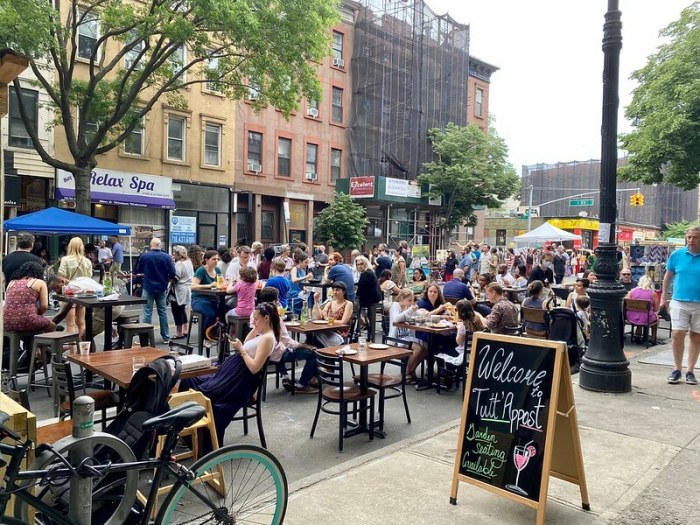Even if George Pataki is not campaigning in Iowa a year from now or is not in a smoke-filled Minneapolis room in 2008 angling for a spot on the G.O.P. ticket, his 12-year rule as New York’s governor will still be judged largely on his record in Lower Manhattan after 9/11.
In Albany there were both accomplishments and missed opportunities — most notably the chance to end the dysfunctional government led by Gov. Pataki, Assembly Speaker Sheldon Silver and Senate Majority Leader Joe Bruno.
Here Downtown, we have criticized Pataki over the last few years, but as he enters his final week in office after two recent appearances around the World Trade Center site, there are also areas where he deserves credit. First off, he always understood the importance of rebuilding Lower Manhattan and never lost focus on the goal. That may not seem like much, but remember, Mayor Bloomberg had different priorities in his first term.
The heart of what was good and bad about Pataki’s record were the detailed Lower Manhattan deadlines he began releasing in the spring of 2003. Although there were some significant, high-profile misses, many of the short-term goals were met. The timeline rescued us from a feeling of drift and gave many Downtown residents as well as C.E.O.’s confidence that things would improve. Bureaucrats were put on notice that the word “delay” was to be treated like a four-letter word and there was progress throughout Lower Manhattan.
Unfortunately deadlines to demolish the former Deutsche Bank building and Fiterman Hall — the two damaged buildings still haunting the site — were missed and the Fiterman project’s beginning remains in doubt. Pataki insisted on building the Freedom Tower first on one of the site’s least viable locations — decisions that led to wasteful government subsidies. The reason the site looks like a hole in the ground five years later is that Pataki let the Port Authority dawdle before it finally began construction of the eastern bathtub on Church St.
The governor caved to 9/11 family pressure and cut one of the two cultural buildings out of the W.T.C. plan. Not only has the promise of a large new cultural center been broken, but the start of construction on the remaining cultural building is at least several years away under the most optimistic scenario.
Under Pataki’s leadership, the Battery Park City Authority probably never ran better, and he deserves an enormous amount of credit for implementing stringent “green” building guidelines in the neighborhood. This should serve as a model for the nation and the world. Pataki’s team in Battery Park City is also responsible for saving and improving the neighborhood ballfields and building yet another top-notch park, Teardrop.
His environmental and park record is strong throughout the state, but probably nowhere is that more evident than Lower Manhattan, where B.P.C. buildings are constructed with energy conservation and other environmental features, and on the waterfront, where Pataki ended decades of delays and began building the Hudson River Park.
All in all, it’s a record that’s less than we hoped for, but more than we could have expected from an Upstate governor with little city support 12 years ago.
















